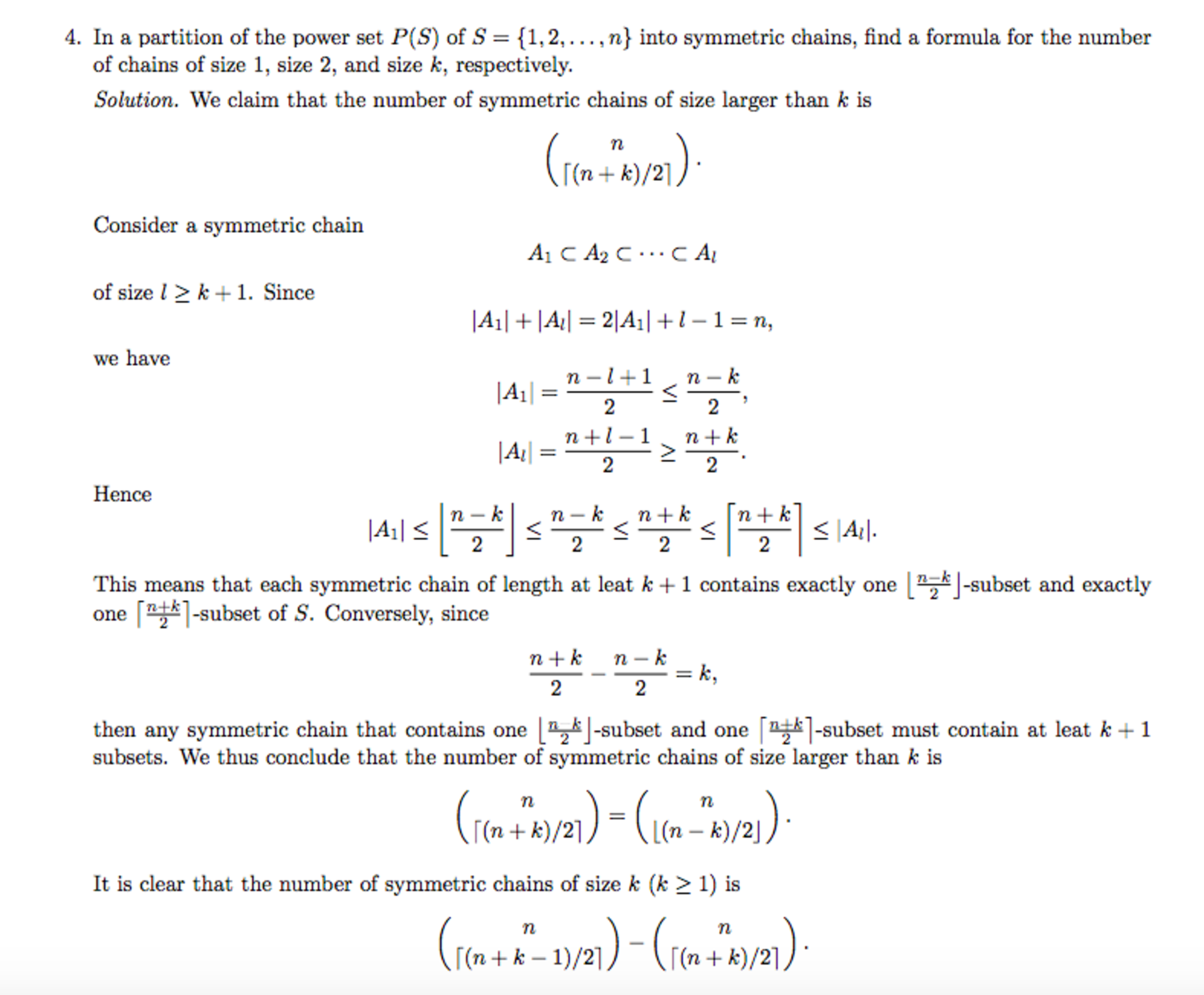In a partition of the subsets of {1,2,…,n} into symmetric chains, how many chains have only k subset in them?
In a partition of the subsets of {1,2,…,n} into symmetric chains, how many chains have only 1 subset in them? How many chains have only 2 subsets in them? How about k?
I tried to solve it using recursive rule like (n,k)=(n-1,k-1)+(n-1,k+1), and got (n,k)=sum_{i=0 to n-1}C(n-1,i)(1,k-(n-1)+2i). However, my solution gets wrong result in some case since it doesn't consider about the (1,2) under (x,0) in the binary tree.
I've got a solution from classmates(as shown in the picture) but we don't understand where does 2|A1|+l-1=n come from.
Any idea about this problem? Thanks!

No vote yet
1 vote
Easy Math Editor
This discussion board is a place to discuss our Daily Challenges and the math and science related to those challenges. Explanations are more than just a solution — they should explain the steps and thinking strategies that you used to obtain the solution. Comments should further the discussion of math and science.
When posting on Brilliant:
*italics*or_italics_**bold**or__bold__paragraph 1
paragraph 2
[example link](https://brilliant.org)> This is a quote# I indented these lines # 4 spaces, and now they show # up as a code block. print "hello world"\(...\)or\[...\]to ensure proper formatting.2 \times 32^{34}a_{i-1}\frac{2}{3}\sqrt{2}\sum_{i=1}^3\sin \theta\boxed{123}Comments
There are no comments in this discussion.